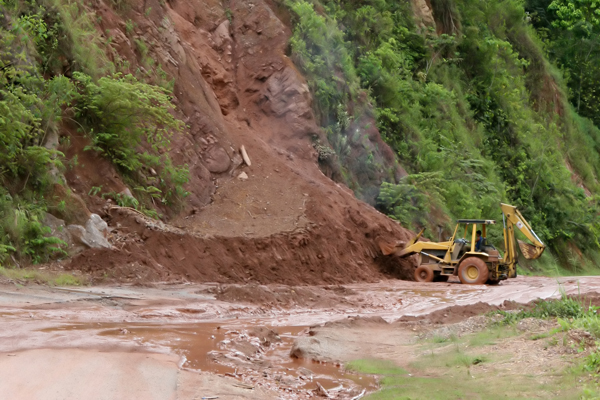3Qs: An engineer’s breakdown of a landslide

On March 22, a hillside collapsed near Oso, Wash., causing a 1,500-foot wide mudslide in what has been dubbed a “high-risk area” and which claimed at least two dozen lives. A mudslide, a subset of the larger category of landslides, occurs when rain has increased the water content of the soil and rock to the point where it is a highly viscous fluid, according to Tom Sheahan, professor and senior associate dean for academic affairs in the Department of Civil and Environmental Engineering. Here, Sheahan breaks down the anatomy of slides and offers potential preventative measures.
What is the anatomy of a landslide, and what factors increase their likelihood?
There are many types of landslides, but the one that occurred in Washington state appears to be a deep-seated slide that leaves a concave-shaped surface behind and a large debris flow in front of the slope that has collapsed. In this case, the debris tragically traveled over several houses, resulting in a loss of life and property damage. Slides are actually a fairly simple case of gravity—which makes the soil and/or rock want to move or flow downhill—overwhelming the ability of the soil or rock to resist that flow. Soil and rock use some combination of friction and cohesion (the ability of the soil/rock to stick together) to resist flows. The Washington state slide was a “perfect storm” in that heavy rains soaked into previously dry or drier than normal soils—this makes the soil heavier on the slope, creating more of a gravity driving force to create instability, and it reduces the those internal forces that the soil uses to resist movement. There is also some evidence that erosion around the base of the slope had removed some soil that may have provided resistance to instability.
What can be done from a civil engineering perspective to prevent them or mitigate their impact? Has your work addressed this topic?
There are a number of potential engineering “fixes,” but many of these are expensive and not always effective, especially for loose debris like that involved in the Washington state slide. Engineers and geologists often closely monitor potentially unstable slopes using a variety of traditional and more advanced methods, such as ground-penetrating radar. Retaining walls can be built to “catch” limited landslide debris. The most extensive remediation would be the installation of reinforcing inclusions in the sliding material to help increase its resistance to movement. It may be more effective to focus on policies and insurance practices, much like that now occurring in coastal flood zones. Policies can be implemented in these regions requiring such an assessment as part of any new development or property transfer (much like a house inspection when the house is sold).
Geologists and engineers typically have these potential slide areas mapped, but governing authorities and insurance companies may have to be more proactive in requiring certain precautions to be taken for new construction or renovations. This is related to my research on coastal sustainability adaptation since we’re looking at how to reduce the vulnerability of coastal development and populations to both extreme events (like Superstorm Sandy in 2012) and longer-term phenomena like sea-level rise.
What other projects or challenges does your primary work focus on, with regard to soil and other geo-environmental issues?
Besides the work I continue to do on offshore geohazards and adaptation of coastal areas to events and long-term changes, I’m involved in the PROTECT project led by my colleague, professor Akram Alshawabkeh in the Department of Civil and Environmental Engineering. This is funded by the National Institute of Environmental Health Sciences and seeks to explore the connection between groundwater contamination and high pre-term birthrates in Puerto Rico. We have also recently studied methods for cleaning up contaminated aquatic sediments using a variety of absorbing and transforming materials, including algae. It’s fascinating to have been trained as a traditional geotechnical engineer and now expand into new areas of research related to soils, contamination, and even public health.






